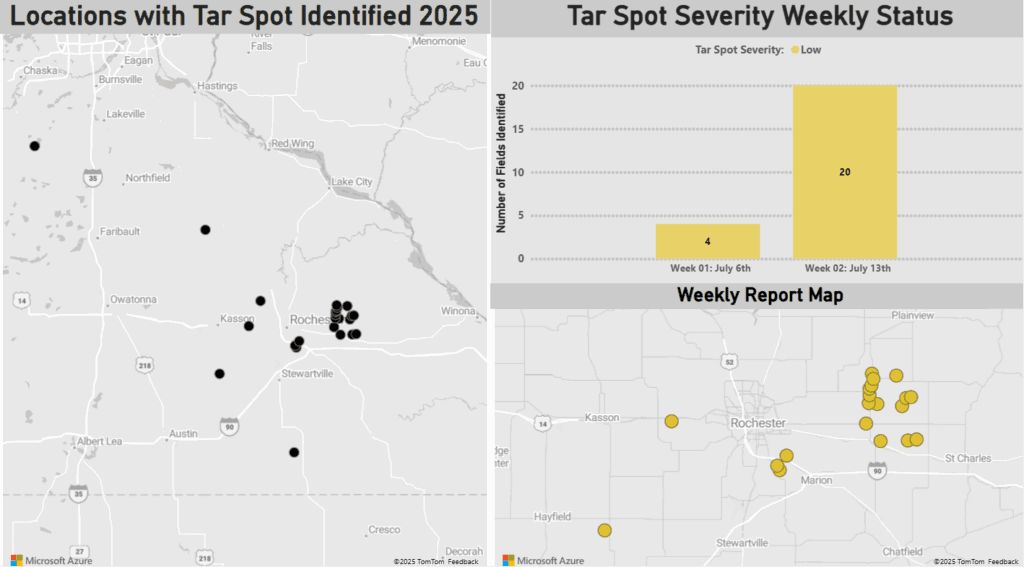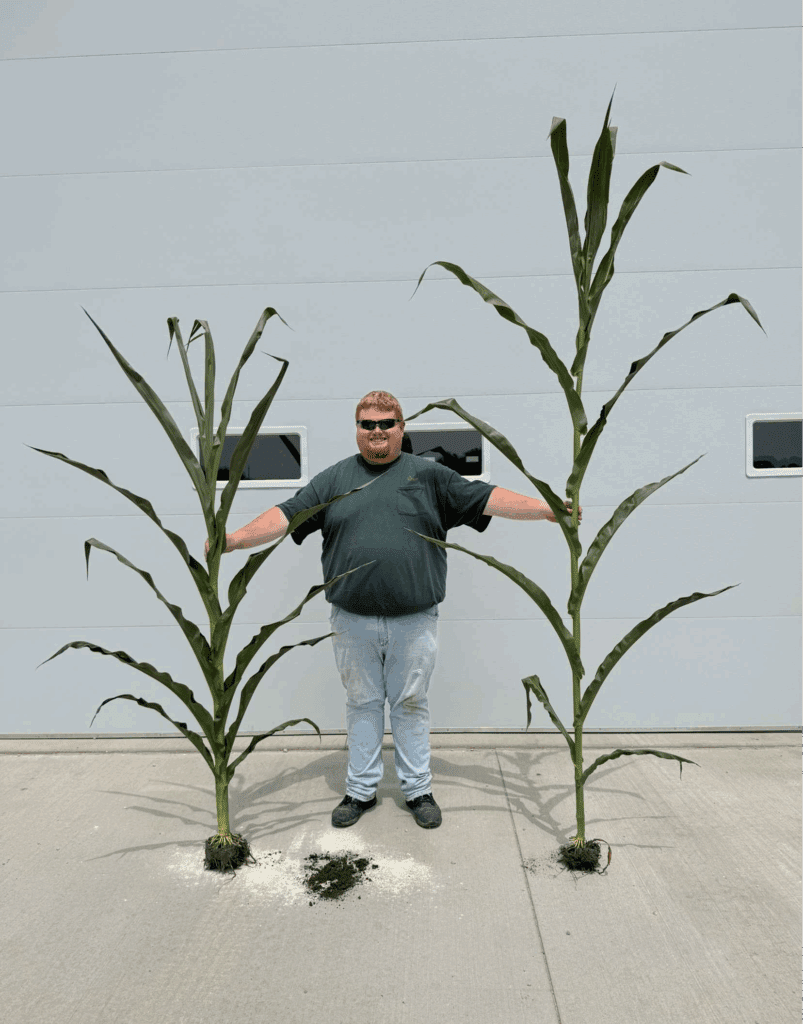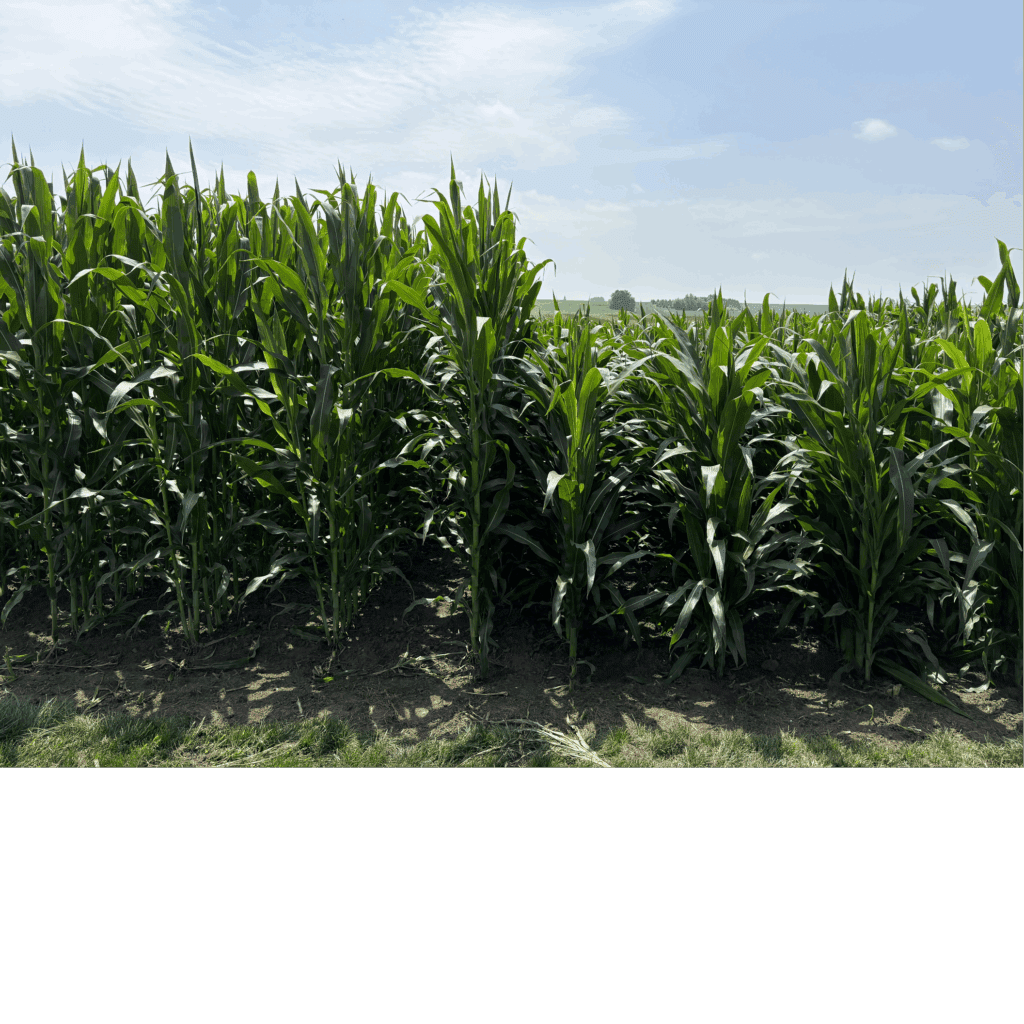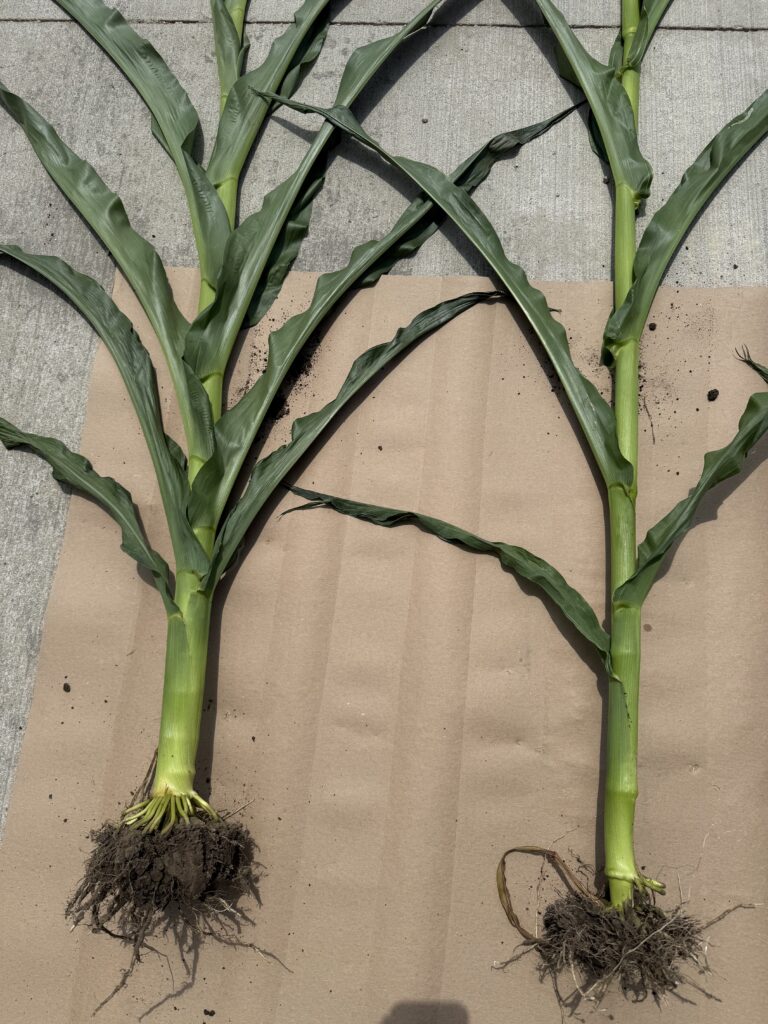
Week of July 14, 2025 Local, professional reports straight from the field,
from all regions serviced by Ag Partners.
Meet this week’s featured agronomists:

Le Center, MN

Goodhue, MN

Elgin, MN

Ellsworth, WI
Ag Partners Tar Spot Tracker
Check here for your weekly update on where Tar Spot has been reported in the Ag Partners territory:

WEST
Belle Plaine – Le Center – Le Sueur – Morristown – Traverse
As we move into mid-July, soybeans across Southern Minnesota are reaching the R2 to R3 growth stages, the ideal window for fungicide applications. Given the persistent humid conditions, frequent rainfall, and high overnight dew points, disease pressure is increasing—particularly from frogeye leaf spot, Septoria brown spot, and white mold in denser canopies. At Ag Partners, we partner with Syngenta and use market’s premier product, Miravis Neo.
Miravis Neo has proven to be a valuable tool in combating these escalating threats, offering:
- Broad-spectrum protection: Controls key foliar diseases including frogeye leaf spot, Septoria, and anthracnose. Improved photosynthetic efficiency and water-use efficiency, giving soybeans better resilience through the reproductive stages.
- R3 (beginning pod) is the optimal timing for one-pass fungicide application.
- Add a quality surfactant or adjuvant, especially if tank mixing with foliar nutrients or insecticides.
- Scout for soybean aphids before spraying—Miravis Neo can be tank-mixed with compatible insecticides if needed.
Bottom Line: With disease pressure mounting, investing in a strategic R3 fungicide application can protect yield potential and extend plant health into pod fill. Don’t wait until symptoms explode—proactive protection pays. Need help timing your fungicide pass or scouting for disease? Contact your local Ag Partners Agronomist today. – Austin


EAST
Goodhue – Kenyon – Lake City – Pine Island – Wanamingo
High yield potential is out there for 2025, we just need to finish managing what we have control of. Below is a picture to help differentiate and accurately identify Tar Spot. Insect Frass ”poop” can look similar, but it can be wiped off. You may need to use some spit and rub pretty good, but it will come off. Tar Spot on the other hand, will not. Tar spot is also slightly raised. Last year, we saw heavy pressure in this area and saw some detrimental yield losses. We haven’t seen an outbreak this year as of so far, but we need to continue to scout for it.

Tar Spot in corn is definitely the most talked about corn disease today, but it’s not the only one that can rob you of bushels. VT corn fungicide will help protect the high yield potential that’s out there. Talk to your Ag Partners Agronomist to get your application lined up. – Todd
Below: 3 common corn diseases that can rob yield – Common Rust, Grey Leaf Spot, and Northern Corn Leaf Blight.



SOUTH
Elgin – Lewiston – Stewartville
The crops around the countryside have been progressing very quickly. Beans are around R1-R2 and early planted corn around April 12th through the 17th are just starting to tassel. The later planted corn is 1-2 leaves away from tassels popping around the area. With the appearance of tassels comes fungicide season!
One interesting breed of corn coming through the pipeline to help with fungicide application is short statured corn. What makes the corn shorter is that the nodes are much closer than a regular corn plant. There is still the same amount of plant, just shrunk down. That makes the stalk diameter larger and stronger. Helping reduce green snap and lodging caused by high wind events and giving more opportunities for ground machines to access fields for applications. Short corn can be used for grain farming and there has been some great data showing it is a great silage option as well. We have customers that we have been trialing short corn with the past 2 growing seasons. It has been fun to view the new technology and look forward to the opportunities this could bring to agriculture in the future.
I hope your fungicide season goes well and alfalfa cuttings are plentiful. As always, it’s never too early to talk seed with your Ag Partners Agronomist! – Tanner



WISCONSIN
Ellsworth
Stay Ahead of Tar Spot to Protect Yield Potential
As you can tell by now, two articles in this week’s update, Tar Spot continues to be a significant concern for corn growers because of the potential for major yield loss. Early detection and timely management are key to protecting your crop. When scouting, look closely for small, raised black spots on leaves, stalks, and husks. Like Todd mentioned, these spots won’t rub off — even with some elbow grease. They may appear circular or oval and can sometimes have a tan halo. Tar Spot thrives when conditions are cool, wet, and humid.
Scouting efforts should begin prior to tasseling and continue through the grain-fill stages (R2-R5). Pay particular attention to fields with a history of the disease or those in areas prone to infection.
Products like Miravis Neo, which offer three modes of action, are your best defense. The best timing for application is typically between tasseling (VT) and milk stage (R3). In situations with sustained high pressure, a second application may be considered — but weigh the costs carefully.
Working together, we can protect the strong yield potential that’s still in front of us. Talk to your Ag Partners Agronomist about a fungicide strategy that fits your farm. – Noa


